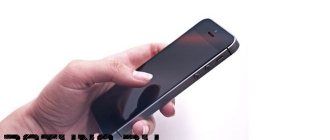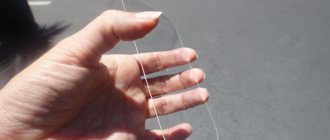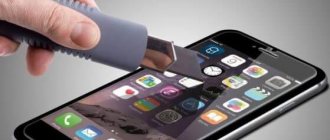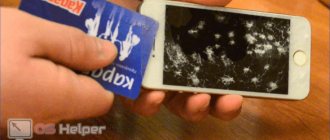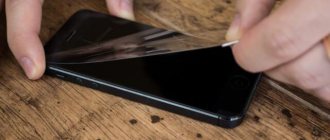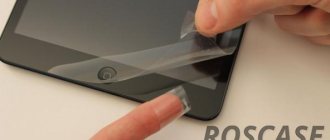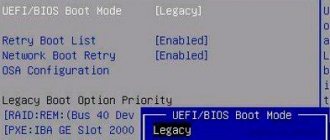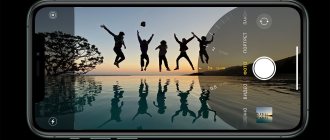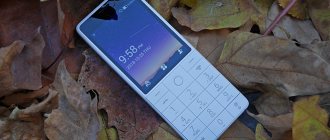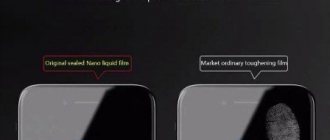What is Gorilla Glass?
Gorilla Glass, developed by Corning Inc., is a glass made from a material called alkali aluminosilicate, which is formed when aluminum, silicone and oxygen combine. By the way, such material is not found in nature in its natural form. Corning began developing it in mid-2005. According to the original idea, the above material should be resistant to damage and scratches, but at the same time be light and thin.
However, Gorilla Glass was not Corning's first foray into this sector. Formerly known as Chemcor, the company developed other types of resistant glass that were used on household products, ophthalmic devices, and for applications in the automotive, aerospace and pharmaceutical industries. However, with smartphones, real success for Corning began in 2010.
Although Gorilla Glass can withstand a hammer blow, this technology will not make your smartphone or tablet indestructible. It all depends on the version of glass and several other factors such as thickness. Therefore, it would be better to think of it as a technology that protects our mobile phone's display from deep scratches and cracks.
Find out more details about each version of Gorilla Glass and their main differences below.
Corning Gorilla Glass 6 – the world's new toughest protective glass
Miscellaneous 07/19/2018 | 1
Technical progress does not stand still, and thousands of companies around the world contribute to its development, improving already created technologies, thereby creating new ones. Today, July 19, 2018, there was an official announcement of Corning Gorilla Glass 6, which has become the most durable in the world. According to the manufacturer, it has no analogues in all characteristics, that is, it is a unique material, which, of course, has already been patented. The first phones with it may hit the market at the end of this year.
Corning says that when developing Gorilla Glass 6, engineers and chemists were given the difficult task of increasing durability while also providing improved protection against heavy splashes. They coped with it, because the new development withstands physical impact an order of magnitude better than the fifth generation, released almost two years ago. To increase the strength of glass, a new composite material was created.
Thanks to it, we managed to solve the problem of repeated falls. In laboratory testing, it was found that Corning Gorilla Glass 6 can withstand 15 drops from a height of 1 meter onto a rough surface. This result is two times better than that of fifth-generation glass, which is what the creators are proud of. Additionally, it was noted that competitive glasses from other brands, consisting of soda lime and aluminosilicate, could not withstand even one fall, breaking immediately.
When working on the new glass, the developers took into account that every year there are more and more smartphones with frameless screens. Moreover, manufacturers are increasingly using glass as a body material, resulting in glass occupying 85% of the body area. That's why Corning Gorilla Glass 6 has increased strength under increased compression, implemented improved touch sensitivity, and also worked on scratch resistance. In addition to this, there is improved current conductivity for the wireless charging coils.
The first smartphones with a new generation of glass, the most durable in the world, will go on sale in the next few months. Corning claims that it is already collaborating with several manufacturers who have expressed their readiness to be among the first to introduce Gorilla Glass 6 into their top-end smartphones. These most likely include Samsung, Google, Sony and a number of other brands.
Earlier it became known that scientists managed to create “indestructible” glass for smartphones that heals itself.
Join us on Google News , Twitter , Facebook , Instagram , VKontakte , YouTube and RSS to follow the news and quickly receive interesting materials.
AKKet.com Telegram channel
Receive notifications about new materials directly in the messenger - on iOS, Windows, Android and Linux.
CorningGorilla Glass 6SmartphonesGlassTechnology
Main differences between Gorilla Glass versions
Gorilla Glass 1
The first Gorilla Glass was developed between 2005 and 2006, but its real popularity came from the iPhone. Apple launched its device in 2007 and, as requested by the company, the technology on its display was 1.5mm thick and had an oleophobic coating that minimized fingerprints and smudges.
Gorilla Glass debuts on the iPhone.
However, the iPhone was not the only smartphone with Gorilla Glass. Corning was able to transfer its technology to 250 devices in the first generation.
Gorilla Glass 2
In 2012, Corning introduced the next generation of Gorilla Glass 2 at CES. Glass was just as strong, but its main innovation was its thickness. The second generation was 20% thinner than before. In laboratory tests, it was able to withstand pressure up to 50 kg without cracks or ruptures.
That same year, Gorilla Glass was used on 600 million devices. Because this version was thinner than the first, it allowed manufacturers to develop lighter and thinner models of their phones. Both the Nexus 4 and Galaxy S3 came with Gorilla Glass 2.
Gorilla Glass 3
Gorilla Glass 3 was even stronger, unlike the previous version which was more focused on thickness. This was also the generation that introduced Native Damage Resistance (NDR) technology, which allowed the glass to cope with even deeper scratches. According to the manufacturer, the third generation prevented up to 35% of scratches on the display.
To mark the third version of its technology, Corning planned to increase the resistance of Gorilla Glass by three times compared to older versions. They were able to do this thanks to a new manufacturing process. GG 3 was shown during CES 2013 and has subsequently been used on models such as the Galaxy S4, Moto G and Moto X.
Galaxy S4 was protected by Gorilla Glass 4.
Gorilla Glass 4
In 2014, Corning introduced Gorilla Glass with a bold new goal. In one survey, the company found that 70% of cell phone screen damage was caused by falls, so it began investing in strengthening its glass. The GG 4 was designed with an emphasis on the idea of drop resistance.
According to laboratory tests, the fourth version of Gorilla Glass was twice as durable as its predecessor. Obviously, this technology does not provide the resistance to large impacts that Moto ShatterShield has on our Moto Force smartphone. Galaxy Note 5 and ZenFone 2 Laser are several models that marked the fourth generation of GG.
Gorilla Glass 5
In the following year and a half, a fifth generation was created, aimed at providing even greater resistance to falls, and it was 4 times stronger than the previous version. Corning says the GG 5 survived drops of up to 1.6 meters in lab tests. In addition, the manufacturer also guarantees that its technology can prevent cracks in 80% of drops on extremely hard surfaces at a height of 1 meter.
Gorilla Glass 6
Gorilla Glass 6, released in July 2022, was a big step forward from the fifth generation. At launch, Corning said it had subjected the safety glass to stringent new testing methods, which can now withstand 15 consecutive 1-meter drops on uneven surfaces. There is evidence that it is twice as durable as Gorilla Glass 5. The sixth generation GG is still used on the latest flagship smartphones, such as the Samsung Galaxy S10 line.
Sony Xperia 1 uses Gorilla Glass 6!
Gorilla Glass 6 - Corning's new super-durable glass for smartphones
Corning has introduced Gorilla Glass 6, the next generation of its proprietary line of protective glass for mobile devices. According to the manufacturer, the long-awaited sixth version of the technology took into account the shortcomings of its predecessor Gorilla Glass 5, improved protection against strong splashes, and significantly increased strength.
Subscribe to our Telegram
Subscribe to our Telegram
According to Corning's press release, Gorilla Glass 6 is designed to withstand repeated drops from high altitudes. A recent Toluna global study found that on average, smartphone owners drop their smartphones at least seven times a year, with more than 50% of all falls occurring from a height of 1 meter. Moreover, as mobile devices have become an integral part of modern life, the likelihood of them breaking has increased manifold, so Corning wants to provide consumers with outstanding protection and better durability.
“To improve the quality of glass coating, Corning scientists designed and developed an entirely new composite material to solve the problem of repeated drops. In laboratory tests, Gorilla Glass 6 withstood 15 drops from 1 meter on a rough surface—twice as good as Gorilla Glass 5. Under the same test conditions, competitive glass compositions such as soda lime and aluminosilicate failed the first drop.” , - from the Gorilla Glass 6 press release.
In addition to solving the problem of insufficient durability, Gorilla Glass 6 supports new trends in smartphone design, the body of which is 85% glass. Corning's new generation of glass offers both aesthetic and performance benefits, including increased compression, optical density, touch sensitivity, scratch resistance and improved conductivity for wireless charging coils.
Gorilla Glass 6 is expected to appear in smartphones in the next few months. Currently, several unnamed manufacturers are already testing Corning's latest technology. It is possible that Apple is among them, because, as you know, a unique partnership has been established between these two companies.
